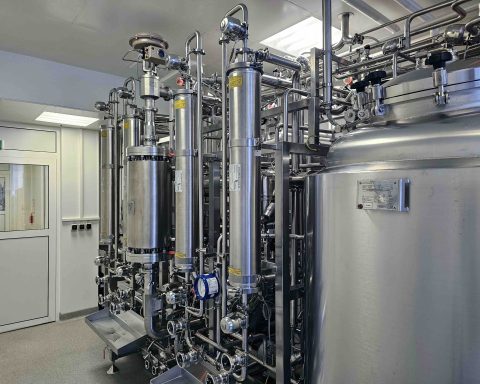There are numerous innovations that have been made in the pharmaceutical industry. Scientists/ researchers are spending endless nights coming up with different techniques to cure diseases and make the world a better, disease free, place. The use on nanotechnology and complex drug delivery systems are some of these new technological advancements made in the pharmaceutical industry.
Despite these great achievements, diseases such as HIV/AIDS, cancer, rabies or even common cold still don’t have adequate and effective treatments. This can be attributed tothe fact that despite the big numbers of innovations created daily in the laboratory; a lot has to be done before the treatments are finally made available to patients.
The manufacturing processes are comprehensive to ensure good manufacturing practice is adhered to. You’ve probably heard about ‘lab rats’ well; yes, this is true. Mice and other animals are used to test new forms of treatments before they are ever used on a human being. To safeguard human beings numerous regulations have been put in place to ensure that the Current Good Manufacturing Processes (CGMPs) are adhered to. It’s a kind of bureaucracy but it the only sure way to safe, effective and affordable medication.
So, Why CGMPs?
These regulations set up by the US food and Drug Administration provides the guidelines forproper design, monitoring and control of drug manufacturing processes. They also regulate the facilities to be used in production of drugs. Manufacturing processes have to be adequately controlled to ensure integrity of the medications. This integrity is in terms of identity, purity, strength and quality of the drugs.
The robust operating procedures detect and investigate product and pharmaceutical quality noting deviations and maintaining laboratories in the best conditions possible. ‘Current’ in CGMPs is important in all this because it is the determining factor in keeping up with the regulations. The systems used to manufacture medications have to use the most recent technology as well as equipment. These help reduce risk of contamination, mix-ups and errors.
Why then don’t we have all these innovations rolled out to the public despite the cGMPs?
What is the Current state of affairs with the CGMPs in place?
Compared to other sectors in the industry, the pharmaceutical sectoris yards behind. There is a low rate of introduction of modern engineering and medical design principles, low knowledge management systems and measurement/ control procedures. The reason for all this is simple; inefficiency and huge costs associated with the pharmaceutical industry. Let us look deeper into these two issues:
-
Cost
Setting up a laboratory that meets the pharma manufacturing standards is costly. New equipment with the latest technology does not come cheap. As a result, most laboratory ideas and research never mature. Good manufacturing practices need huge capital injections and with the world economy the way it is, fulfilling such obligations is challenging. Purchase of new equipment every other year is a cost that cannot be easily covered. This is also because the drugscan’t be sold at unaffordable prices—they need to be affordable.
-
Inefficiency
At the moment there is no easy flow between the research process and the rolling out of medications. This is attributed to the lack of continuous improvement in the industry. Continuity in improvement inpharmaceutical operations is a very essential element in modern pharmaceutical quality systems. Its main aim is to optimize efficiency by minimizing wasted production efforts.
This is also seen in terms of static manufacturing processes where the pharmaceutical operators are expected to produce better results underthe exact conditions.
What is the System’s perspective to regulation of Good Manufacturing Standards in Science?
The main aim of the cGMP system is to encourage adoption of new and better technological advancements by the pharmaceutical industry. By having enhanced manufacturing knowledge, regulatory reviews and inspection policies would be based on high quality pharmaceutical science.
A good systems approach would also ensure application of pharmaceutical quality management systems and risk based approaches whose main focus would be the pharmaceutical industry and other agency critical areas.
What is the Future/ ‘Desired State’ Of the Pharmaceutical Industry?
With all the brilliant brains working on new ways to beat diseases, it is important to see improvements in terms of more equipment being purchased and also continuous improvements in the systems to increase efficiency.
Rigorous analysis has to be done to determine how savings can be made and minimizecosts.
Dependence on inspection and testing has to cease or be minimized. There should be emphasis on improved designs and product processes.
Scientists and pharmaceutical engineers should seek to achieve high pharmaceutical quality for products through use of effective and efficient manufacturing processes, continuity in assurance of quality in ‘real –time’ and applying policies that recognize the levels of scientific knowledge in product application, validation and their capacities. They should also adopt risk based scrutiny relating to the level of scientific comprehension in formation and factors affecting manufacturing processes and the output.
How to Encourage New Technological Advancements within Pharmaceutical cGMPs
- Incorporation of strong policies to protect the public health
The general population is not in a position to detect product quality; therefore cGMPs should be adhered to ensure the safety of the end users.
- Setting up of policies and standards that are science-based
Such methods will result in reduced production cycles, prevention of wastes, real –time releases, efficient energy and material use, and continuous processing which helps improveefficiency.
- Application of risk-based relationships during orientation
- Pooling resources through international cooperation
It should be noted that for success in implementation of the cGMPs, continuous improvement has to be understood in depth by all parties. Self-imposed manufacturing processes like keeping current systems in corrective action state have to be abolished. Even though others will argue about the necessity of corrective actions, it is a way to add anxiety, fear and discourage improvements to existing processes.
Continuous improvement equals continuous motivation to workers which results in an advanced pharmaceutical industry.







